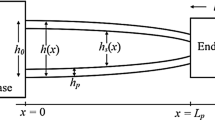Abstract
This paper reports a novel means of integrating a high-performance dual-modal ZnO piezoelectric transducer with a flexible stainless steel substrate (SUS304) to construct dual-modal vibration-power transducers. To fabricate vibration-power transducers, the off-axis RF magnetron sputtering method for the growth of ZnO piezoelectric thin films is adopted. The stainless steel substrate has a higher Young’s modulus than those of the other substrates, and behaves the long-term stability under vibration. The transducer includes a ZnO piezoelectric thin film deposited on the stainless steel substrate combined with Pt/Ti layers at room temperature, which is fabricated by an RF magnetron two-step sputtering system. In this report, the ZnO piezoelectric thin films deposited with the tilting angle of 34° are set by controlling the deposition parameters. Scanning electron microscopy and X-ray diffraction of ZnO piezoelectric thin films reveal a rigid surface structure and a high dual-modal orientation. To investigate the generating characteristics of the dual-modal transducer, two basic experiments of longitudinal and shear modes are carried out. Based on cantilever vibration theory, the cantilever length of 1 cm and a vibration area of 1 cm2 are used to fabricate a transducer with a low resonant-frequency of 65 Hz for the natural vibration. A mass loading at the front-end of the cantilever is critical to increase the amplitude of vibration and the power generated by the piezoelectric transducer. The maximum open circuit voltage of the power transducer is 19.4 V.
Similar content being viewed by others
References
S. Jacobsson, A. Johnson, Energ. Policy 28, 625 (2000).
J. P. Painuly, Renew. Energ. 24(1), 73 (2001).
T. L. Smith, J. D. Ferry, F. W. Schremp, Jpn. J. Appl. Phys. 20, 144 (1949).
F. Lu, H. P. Le and S. P. Lim, Smart Mater. Struct. 13, 57 (2004).
A. Lawver, “Thunders: A new frontier in research for smart materials”, Smart Materials Bulletin, 2001, 5 (2001).
H. W. Kim, A. Batra, S. Priya, K. Uchino, D. Markley, R. E. Newnham and H. F. Hofmann, Jpn. J. Appl. Phys. 43, 6178 (2004).
Author information
Authors and Affiliations
Corresponding author
Rights and permissions
About this article
Cite this article
Chen, YC., Chang, WT., Cheng, CC. et al. Investigation of High-Efficiency Vibration Energy Transducer with Dual-Modal ZnO Piezoelectric Thin Films. MRS Online Proceedings Library 1604, 6590 (2013). https://doi.org/10.1557/opl.2014.333
Published:
DOI: https://doi.org/10.1557/opl.2014.333




